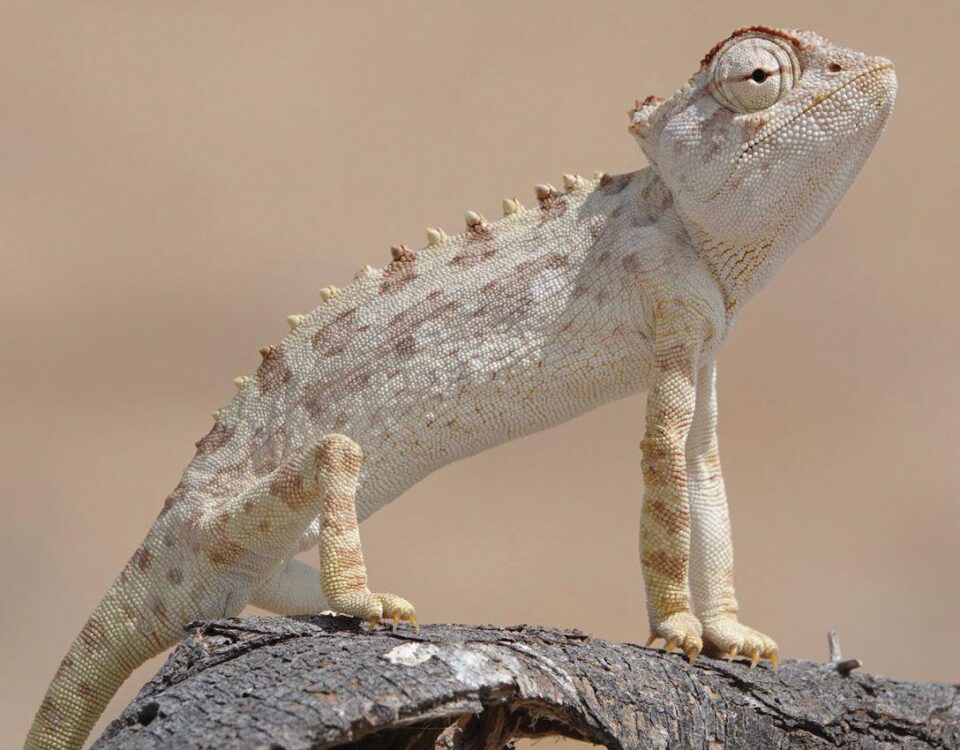Future of wildlife secured through hunting
July 3, 2012Kuiseb Basin Management Committee – the first of its kind in Namibia
July 3, 2012An Environmental Impact Assessment for the De Beers Marine South Africa deep-water mining operations off southern Namibia was commissioned in 1990. Since then environmental research has formed an important component of the company’s Environmental Management Programme, reports Dr Lima Maartens, Environmental Scientist at De Beers Marine Namibia.
The main focus of De Beers Marine Namibia’s Environmental Mana-gement Programme was to investigate the two key impacts associated with deep-water mining, namely the discharge of tailings and the effect of the action of the mining tools.
Mining tools in the form of drill bits or crawlers remove the top layer of sediment, which is then airlifted or pumped to the vessel. After the small portion containing diamonds has been removed, the material is discharged overboard, the latter creating a plume of suspended fine-grained sediment that is visible on the water surface. The sediment contains no toxic substances, but there was concern about the effect of the increased turbidity in the water column and over the seabed, and the possible smothering effect of the tailings plume settlement on communities living in or on the seabed in adjacent, undisturbed areas. As plume settlement is strongly influenced by environmental conditions, which are not constant, and because there were difficulties obtaining a suitable sampling device, the focus of the impact studies was on the direct impacts of mining on seabed biodiversity.
Research techniques employed to compare disturbed vs. undisturbed sites, as well as sites disturbed by horizontal (crawler) vs. vertical (drill) technology, included the collection of samples by means of a Van Veen grab and the two-person research submersible Jago. The Van Veen grab was used to collect biological material, that is animals living in the soft sediments, and data on the sediment composition, whilst the Jago was used to collect video footage material of the seabed and rocky substrata in water depths ranging from 90 to 130 metres. Information collected was analysed by a multi-disciplinary team of independent scientists. It was found that even though diamond-mining operations have a localised negative impact on hard- and soft-bottom communities, mined areas take approximately four to eight years to recover. Rehabilitation of the seabed takes place as a natural process. It was also concluded that the impacts of the current deep-water mining activities are not significant in comparison to the dynamics of the natural system.
Variation in seasonal, for example bottom dissolved oxygen and hydrogen sulphide, concentrations and the occurrence of natural storms, periodic events such as upwelling, and the occasional flooding of the Orange River (resulting in increased sedimentation and/or reduced salinity levels) may affect seabed communities negatively. In order to survive, seabed communities will have to adapt to these ever-changing conditions.
Deep-sea diamond mining and exploration activities off southern Namibia are currently conducted by De Beers Marine Namibia (DBMN) on behalf of Namdeb Diamond Corporation. At the end of 2001, DBMN assumed res-ponsibility for environmental marine mining impact research in Namdeb’s licence areas between Lüderitz and the Orange River mouth. Issues that needed to be addressed included:
• Looking into the requirements from the environmental risk assessment study (the west coast rock lobster population and hydrogen sulphide-rich sediments were previously identified as potential high-risk matters);
• Expanding the area covered by the benthic grab sampling programme to include the inshore area; and
• Investigating the use of alternative sampling equipment. This includes side-scan-sonar data from the De Beers Marine Autonomous Underwater Vehicle (AUV) to assess the smothering effect of tailings plume settlement, and Remotely Operated Vehicle (ROV) video material to assess the smothering effect of tailings plume settlement on hard substrata and the distribution of sensitive biological species and their habitat.
To date, all of the issues above have either been addressed, or are in the process of being addressed. Following the Symposium on Co-Management of Resources off the South-Western Coast of Africa in 2000, ROV baseline surveys were carried out jointly with the Ministry of Fisheries and Marine Resources (MFMR) in Lüderitz to investigate the availability of food and habitat to rock lobster populations in specific areas. Another collaborative rock-lobster fishing/ DBMN marine mining assessment project, together with MFMR, is planned for 2004.
Moreover, during one of the above-mentioned ROV surveys, video material of sulphur bacteria was recorded, similar to the footage obtained during the 1999 De Beers Marine Jago survey off Lüderitz. In early 2004, DBMN participated in Leg 3 Namibgas – Geophysics and Gas Eruption off Namibia of the RV Alexander v. Humboldt Angola-Benguela Expedition. The overall objective of Leg 3, one of three legs called Namibgas, was to conduct detailed investigations on gas accumulations (that is of hydrogen sulphide, methane and carbon dioxide) in the sediment and sea-bottom structures.
In addition to the above ongoing research projects, the Environmental Section of DBMN is also involved, in terms of providing information and/or expertise, in the following three mining-related Benguela Current Large Marine Ecosystem (BCLME) projects:
• Data gathering and gap analysis for assessment of cumulative effects of marine diamond-mining activities on the BCLME;
• Assessment of cumulative effects of sediment discharge from on-shore and near-shore diamond mining on the BCLME; and
• Assessment of cumulative impacts of scouring of sub-tidal areas and kelp cutting by diamond divers in near-shore areas of the BCLME, as well as the Coastal and Marine Biodiversity Initiative.
Last but not least are DBMN’s monitoring programmes. These include:
• The Ocean Sightings Pro-gramme, ongoing since 1996. Sightings of dolphins, whales, and more unusual life forms such as jellyfish, sunfish and turtles are recorded. The data on dolphin sightings are forwarded to the Dolphin Action Protection Group in South Africa on a quarterly basis.
• The recording of weather and ocean conditions. This information is available on request.
This article appeared in the 2004/5 edition of Conservation and the Environment in Namibia.

